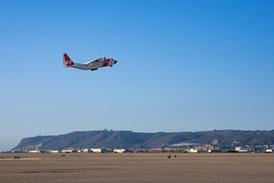Graham Warwick/SAVANNAH
Additional work required for Joint Aviation Authorities (JAA) approval of the Gulfstream GV has cost the manufacturer $10 million, a figure which it estimates could double before European certification of the business jet is secured.
Despite the delays and additional costs, Gulfstream is pressing ahead with efforts to obtain JAA approval of the GV. "It's important to continue, and we will," says president Bill Boisture. The company expects to receive European certification next year.
The GV received US Federal Aviation Administration approval in 1995, but European certification efforts have fallen foul of a lack of harmonisation between the FAA and JAA in certain areas, primarily loads testing. "Frankly, we've found disagreement between the FAA and JAA on certification of the aircraft," says Boisture.
The JAA is requiring Gulfstream to validate loads at extremes of the flight envelope through testing, and not the analysis accepted by the FAA, says senior vice-president, programmes, Pres Henne. As a result, the company is building additional ground test articles to validate the loads.
Boisture says the GV is a victim of "continuing changes in the rule base". When the aircraft was designed, "harmonisation of the rules was not clear enough", he says. The analytical method of validating loads was accepted on the last two US aircraft approved by the JAA, the Boeing MD-90 and 717, Henne points out.
Boisture says he regards this as a trade barrier. The lack of JAA approval "has limited our ability to sell the GV into Europe to some extent." Despite this, nine GVs operate in Europe, but most are on the US register because of the lack of European certification.
Gulfstream may seek country-by-country approval, but the certification work involved and the effort expended towards JAA approval makes it reluctant to do so, says Henne.
Source: Flight International























